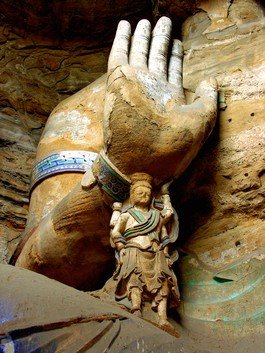Wang Lang describes the concept
behind Lei Feng vs. VISION as
follows:
"A portrait of ‘Lei Feng’, who was
held up as a social role model in
China during the Fifties and Sixties,
alternatively may comprise
innumerable photos from the covers
of ‘VISION’, a model magazine for
leading trends in fashion, so as to juxtapose the value orientations of two different eras and contexts within the same two-dimensional picture - entering into a wholly new quadrant resulting from the disintegration of time and space. In fact, it possesses an utter ‘virtuality’. "
Lei Feng, the man in the portrait, himself is a product of ‘virtuality’. His life story was fabricated as an exemplar of puritannical socialist morality and virtue. Decades ago, many photos of Lei Feng were manually doctored images. They were literally cut and pasted by party propagandists to manufacture and accentuate his heroic selflessness as a humble, loyal soldier and worker faithfully serving the Communist cause. In contrast, the vivid pixel elements of fashion models in this mosaic clash with this moralistic conformity. They celebrate an unrestrained and flamboyant individuality which defies obedience and rejects humility and servitude.
By fusing divergent phenomena into a unified whole, the artist deconstructs our false perception of pure duality such as binary opposites, thesis and antithesis or subject and object, in the context of an expanded comprehension of reality.
Some notes on the creation of the video:
This video represents a collaboration of sorts between myself and the artist of the work, Wang Lang. Most of the sequences in this video were photographs I took of this work on canvas with nikkor 50mm and 105mm lenses mounted on a D800. Two short video segments were also taken with the 105mm and the D800. The very last zoom sequence is a digital animation created by the artist himself.
All of the photo, video and audio editing was done with either open-source or free software. The background music was something I also composed using free windows-based software on a virtual keyboard app with my tablet.
I first translated the description of this work by the artist from Chinese, then added in my own commentary for further context.





